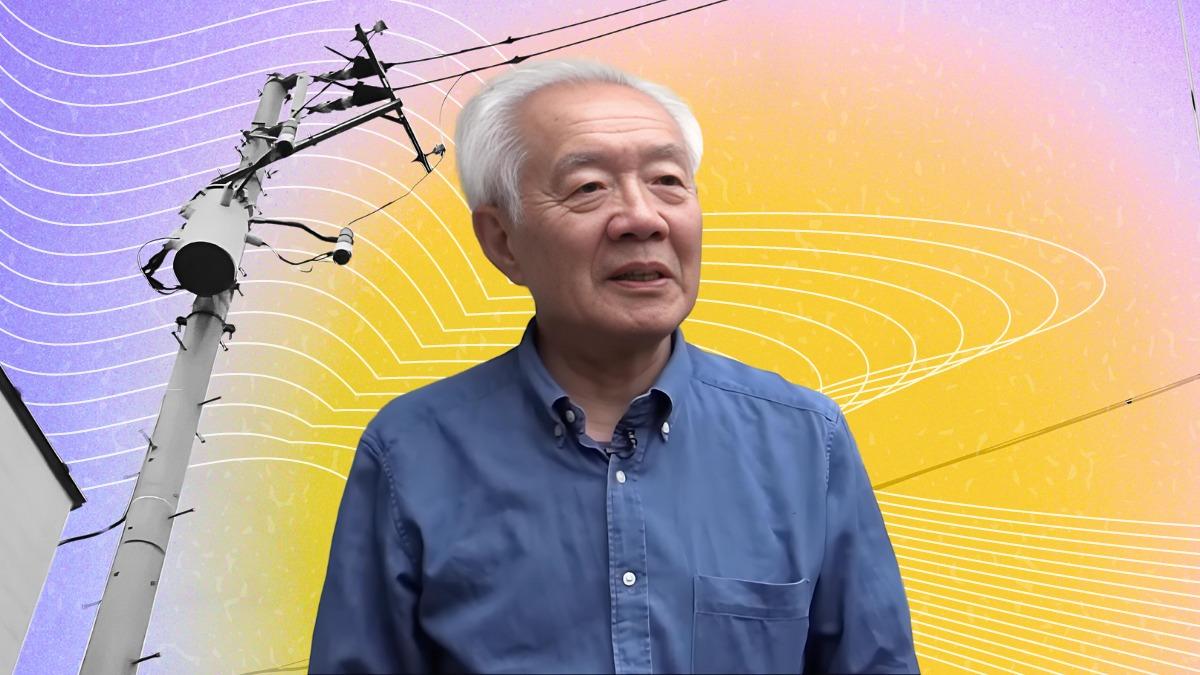But will his gear care?
Remember the story about an especially avid 80-year-old audiophile from Japan who erects his own power pole to keep his precious audio gear from “electric interference”? A user from Reddit unearths this story once more and jokingly asks whether it’s someone from the r/audiophile group.

Predictably, no one was brave enough to spill the beans, and many even ridiculed the old man’s radical move to clean up his power.
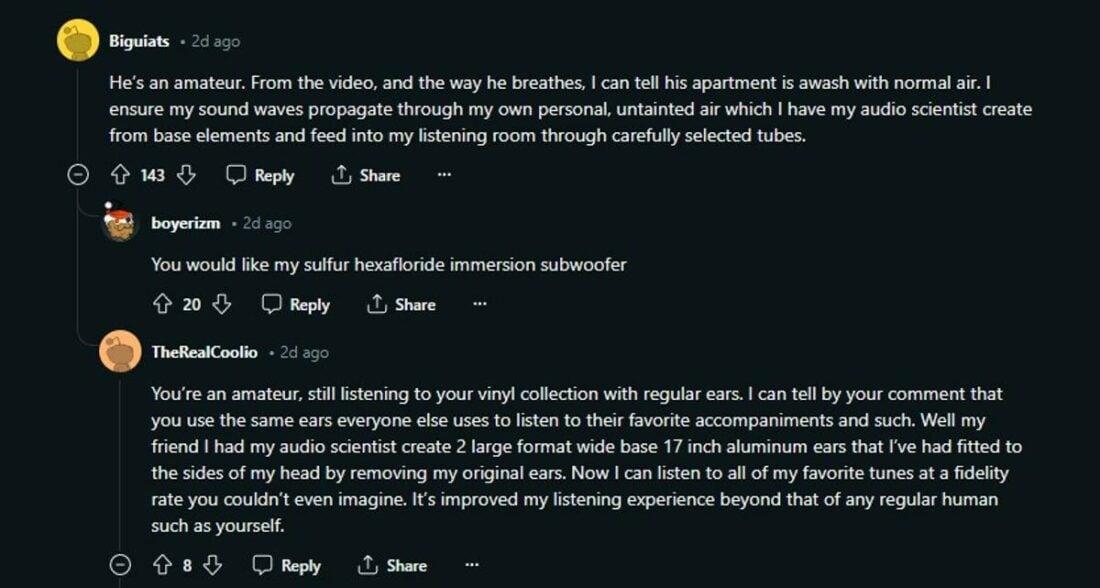
But maybe the old man is right, and our power mains are rife with all kinds of gremlins that keep our precious streamers, DACs, and amplifiers from working to their fullest potential. Let’s look at the basics of power delivery and see whether his theory holds water or, in this case – charge!
But First, the Story
For those unfamiliar with the story, here’s a quick recap.
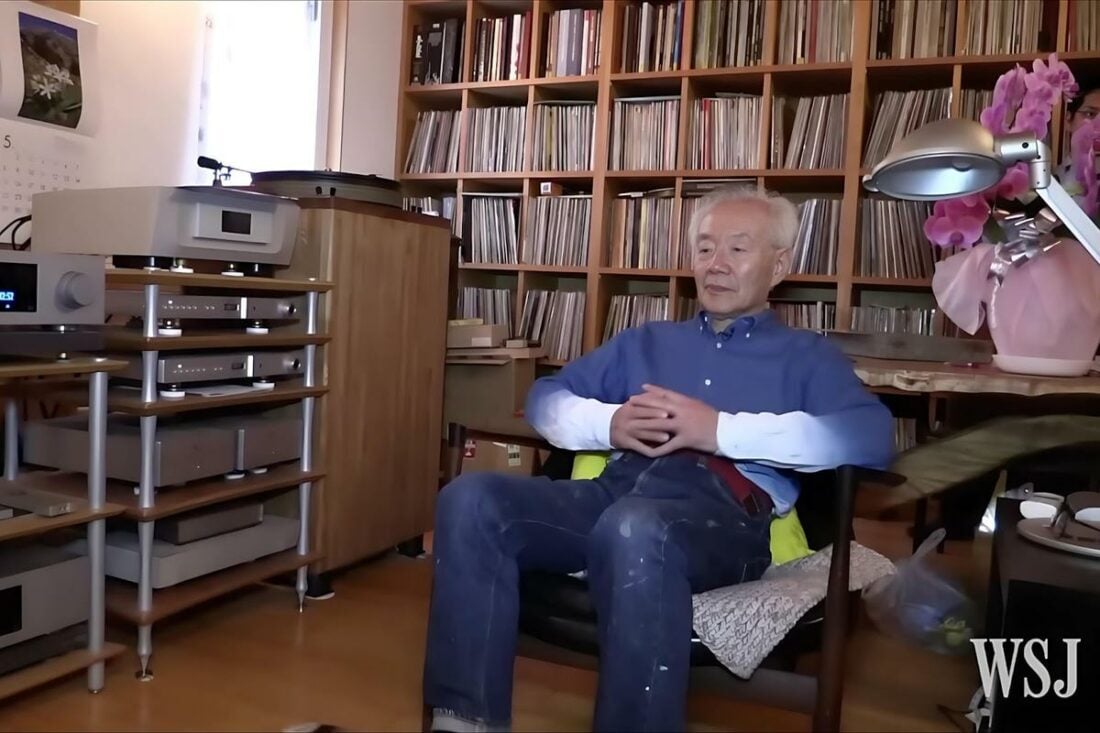
The story is about Takeo Morita, 82 years old and a retired lawyer from Tokyo.
Known affectionately as “rock grandpa” at his favorite vinyl record shop, Morita has invested a significant amount of time and money into his audio system. He owns a collection that includes a $60,000 amplifier from the United States and vintage loudspeakers from the 1960s, among other top-tier equipment.
Yet, Morita realized the ultimate key to perfect sound wasn’t just in the gear but in the electricity powering it.
The reason? Tainted electricity due to interference as a result of sharing the source with other people.

So, to cut through the noise of regular electrical supply, Morita decided to install a personal 40-ft utility pole in his yard for $10,000. This pole connects directly to the power grid through a transformer, ensuring Morita gets the ‘cleanest’ electricity possible for his audio system.
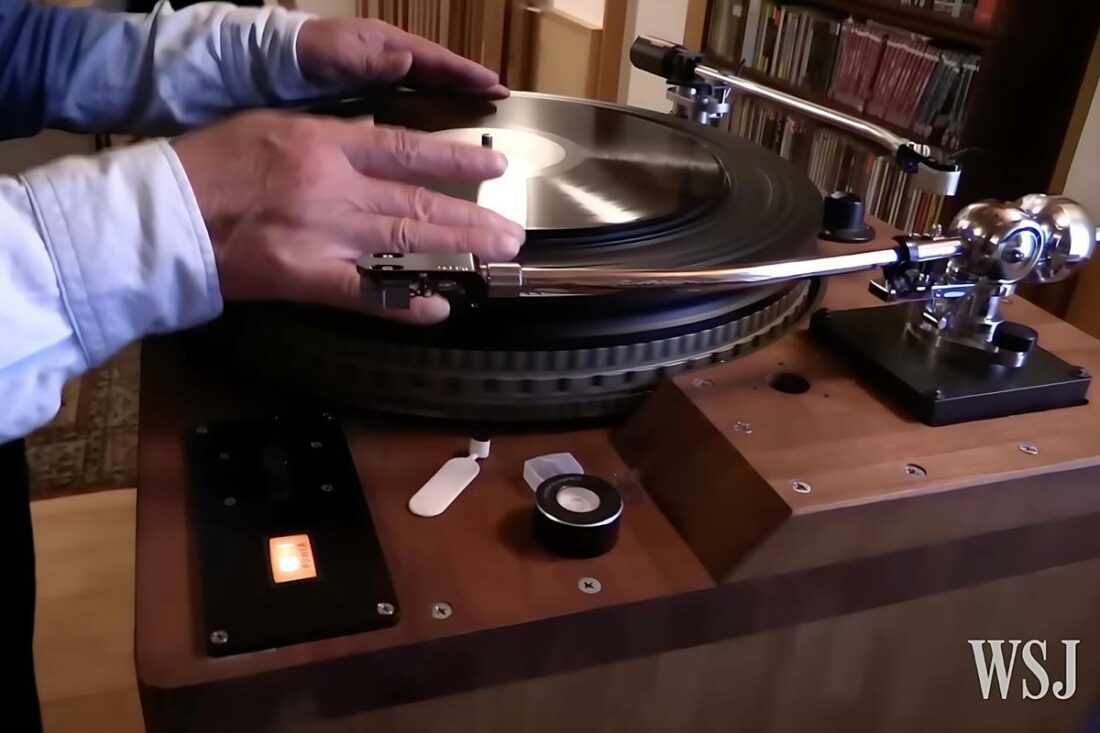
After putting up the pole, Morita tested out the difference it made with a specific record: Queen’s “I’m in Love With My Car.”
According to Morita, the difference was clear. The vocals, which used to sound okay, now felt alive and full of energy.
“Now, it feels like Queen is in this room, just for me.” he exclaims.
What Do Amps Eat?
So, let’s get back to the topic at hand: does having your own utility pole actually help? Or is it just all placebo?
To understand this, it’s best to learn about how amps use their power source first.
Take an average audio amplifier and see where it gets those watts to dole out to your speakers or headphones. While it’s easy to imagine that it takes electrical energy straight from the wall outlet, in practice, it’s a bit more complex. Enter the power supply unit!
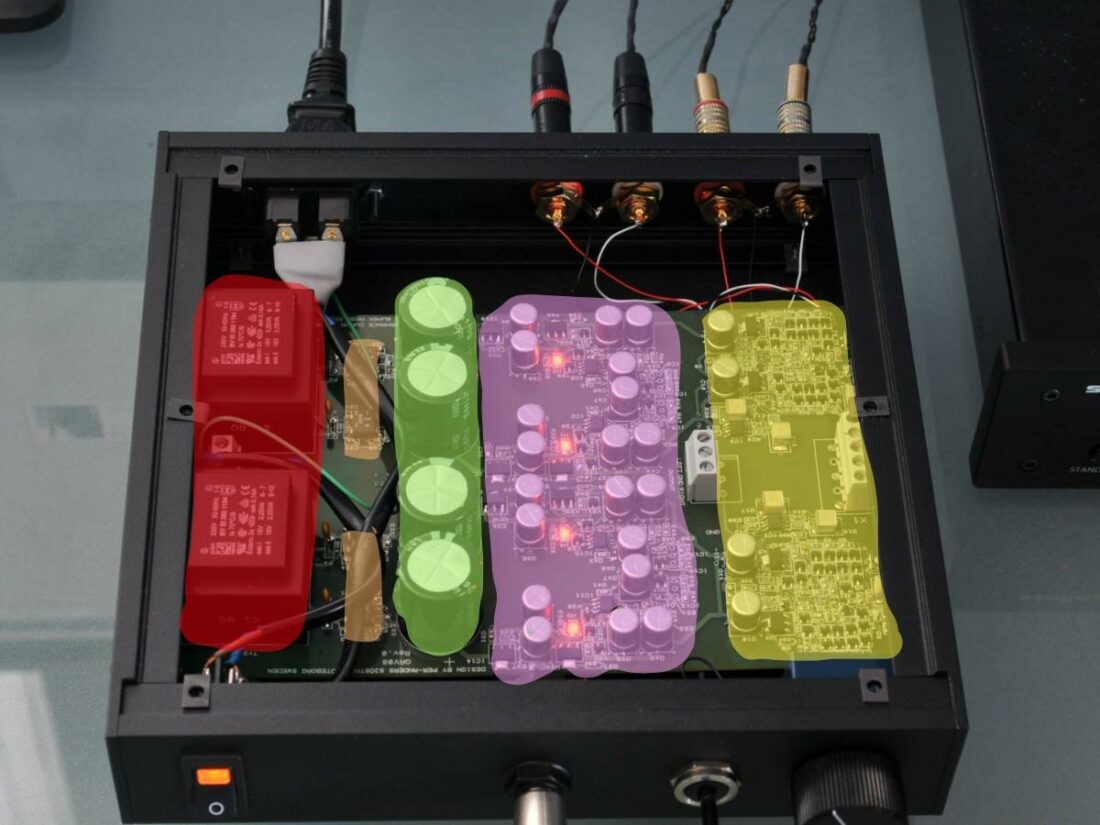
A simple linear power supply consists of a transformer, a bridge rectifier, and a capacitor bank. Let’s look at what each of these components does:
- Transformer – takes the high voltage AC from the power grid and lowers it to something more useful for an amplifier – starting from 12VAC for head amps to 50VAC and more high power speaker amplifiers
- Bridge rectifier – amplifiers work by modulating direct current which is what the diode rectifier bridge tries to generate by taking each half of the AC waveform and sending it to the correct side of the PSU. Mind you – this isn’t really DC yet, it’s a noisy sawtooth waveform, but we can work with it
- Filter capacitors – similar to a battery, the capacitor holds electric charge, and it’s what actually powers your electronics. The bridge rectifier uses the noisy “DC” to charge it up, and then the capacitor gives a relatively clean DC to the amp or DAC it is built into
Therefore, it’s more correct to think that the capacitor in the device is what powers it. The larger the capacitor, the cleaner the DC will be at a fixed power draw. For example, Class-A amplifiers always draw the same amount of power, so their PSUs can be relatively simple.
A Class-AB amp, on the other hand, will draw more power once it leaves the Class-A region because it can dynamically “request” more power from the PSU. Therefore at higher power levels, it can sound worse as the PSU gets strained and might deliver dirtier power.
Mind you – in this scenario, the dirty power is from the PSU only. Trying to fix the power grid will do absolutely nothing here. Any improvement could only be achieved by redesigning and rebuilding the PSU because it’s the main source of dirt.
Ghosts in the Power Line
Does that mean the power that’s being delivered to our homes is pristine? Not really, or rather – not in all cases. The main noise source in electrical power lines is the multitude of switch-mode power supplies most electronics use these days.
If you’re living near industrial areas, your power can be unstable as high-power machinery is able to sag the whole network or distort the 50/60Hz AC sine. A lower incoming AC voltage can change the sound of your gear because it’s usually tuned to a specific power supply voltage.
Of course, it’s up to debate whether you’ll hear a difference.
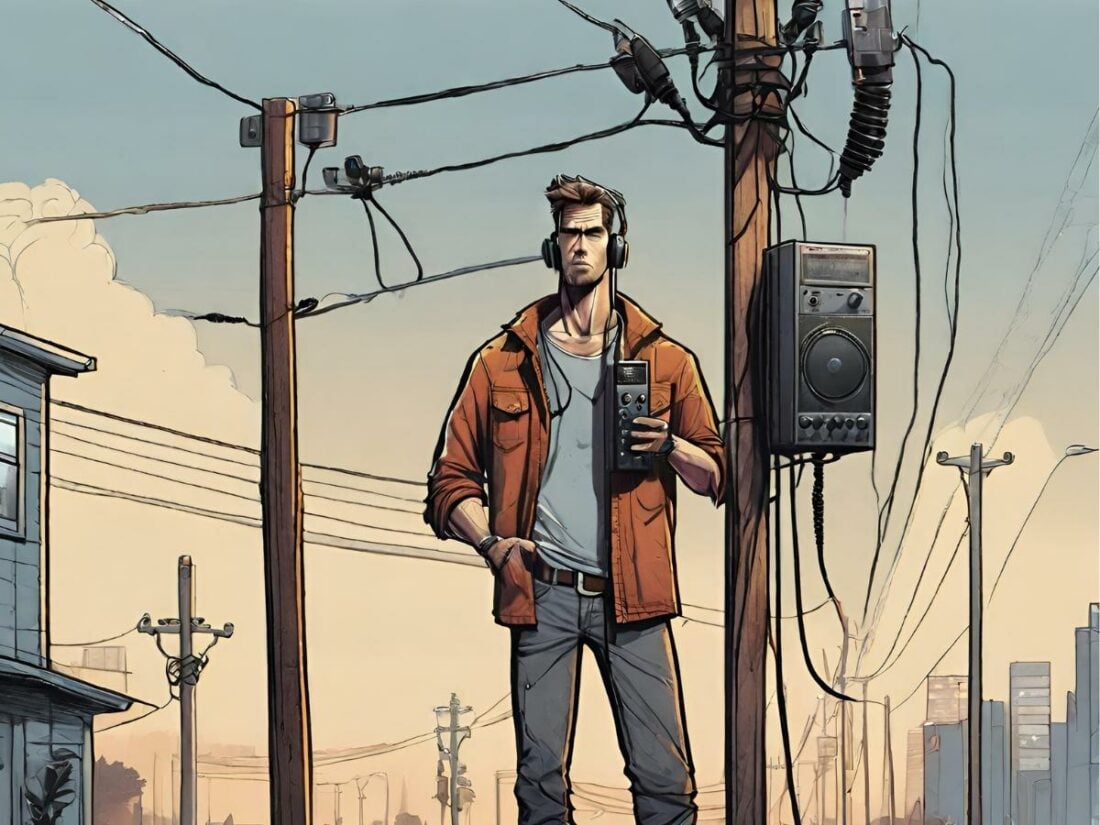
Again – none of this can be fixed by a dedicated power pole and transformer because we’re still sharing the same medium voltage grid.
If clean power is required, there are dedicated power conditioners that will filter and regulate AC voltage to a set target. Or maybe just use a UPS unit which essentially regenerates a clean AC voltage.
Spring Cleaning
If you’ve got noise problems with your system, some measures can be taken. First of all – check whether your power outlet has a connected ground pin. Not only it can save your life in some fault conditions, but having it disconnected can cause noise in some cases.
While it’s not as bombastic as putting up your personal power pole, the key to fighting noise problems is identifying them. Bad filter capacitors, faulty cabling, and ground loops are usually to blame.
Sometimes grounding problems can be alleviated by switching to a balanced connection because they keep the ground connection out of the signal path.
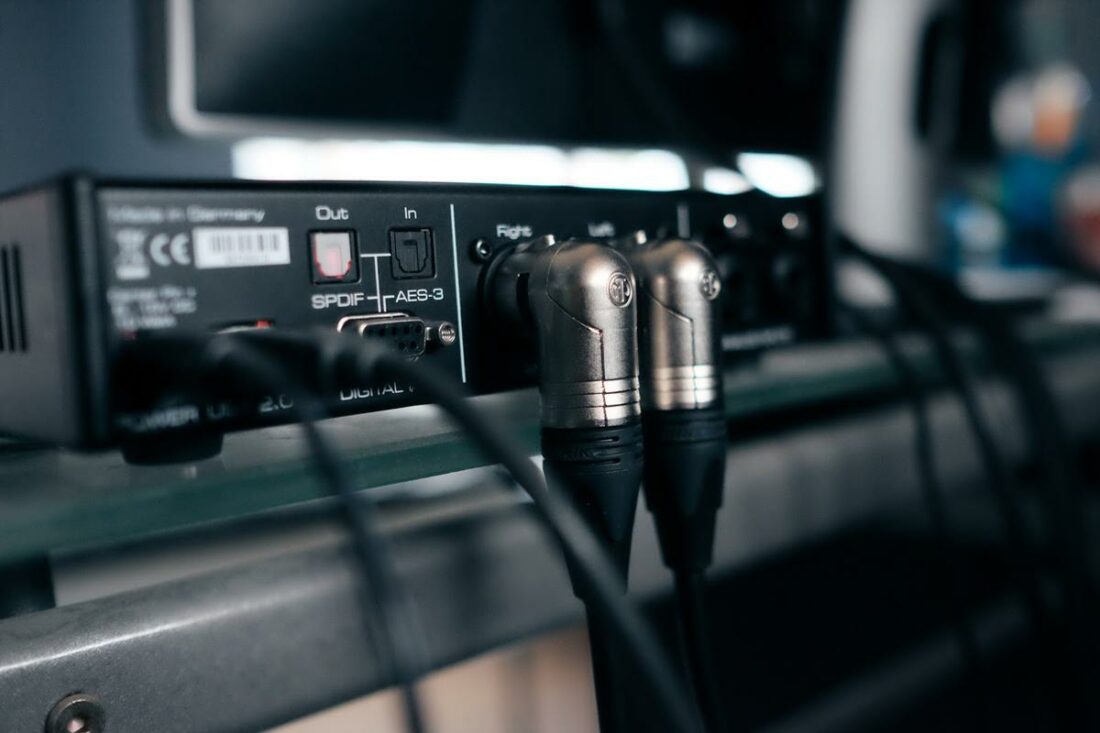
Bad filter capacitors usually plague older gear and they cause a buzzing noise at twice the frequency your power mains run. And, the noise won’t change by turning the volume knob.
A technician would then open your device up and change any bulging or leaking capacitors, and it should work as new.
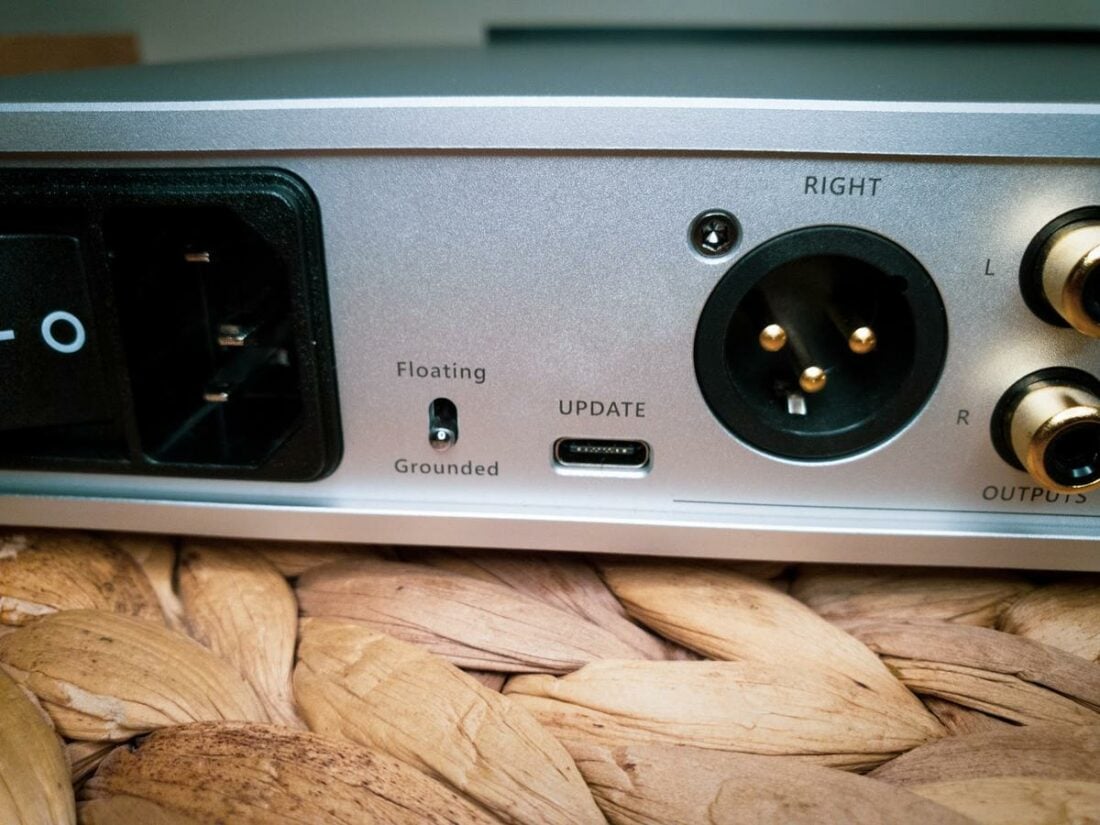
Humming noise at mains frequency usually means you have a bad cable or connector somewhere. It should be in one channel, and the intensity of the noise will change by turning the volume knob. To zero in on the culprit, swap the cables for both channels.
Fixing the faulty cable is usually a simple solder job.
So there you have it – a short and sweet guide on how to fight noise gremlins. Most of the time, it will work even if it doesn’t get a “25-year-old Audiophile Gets Rid of Noise by Swapping a Bad Cable” headline in the Wall Street Journal.
